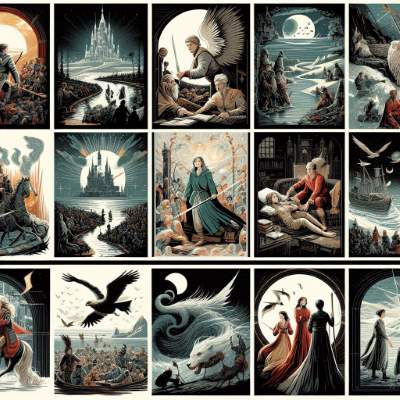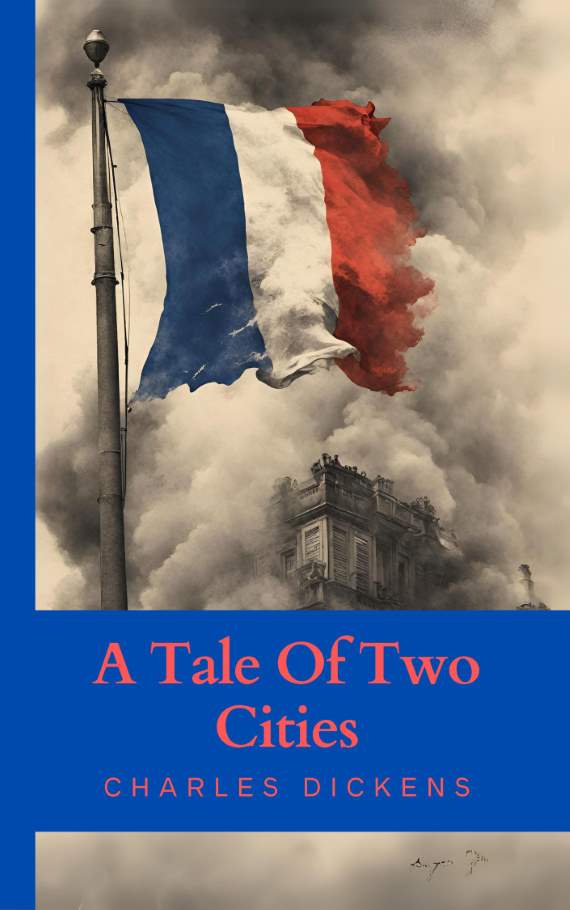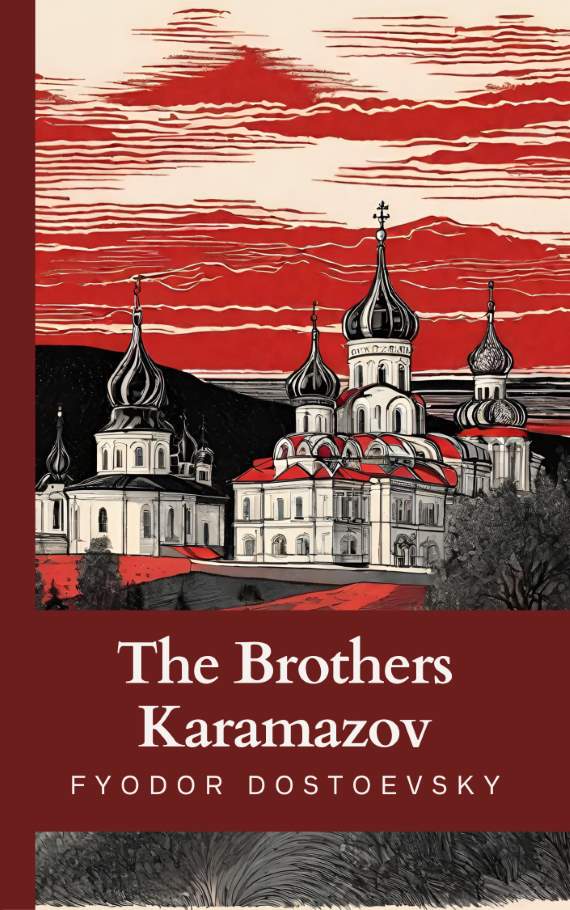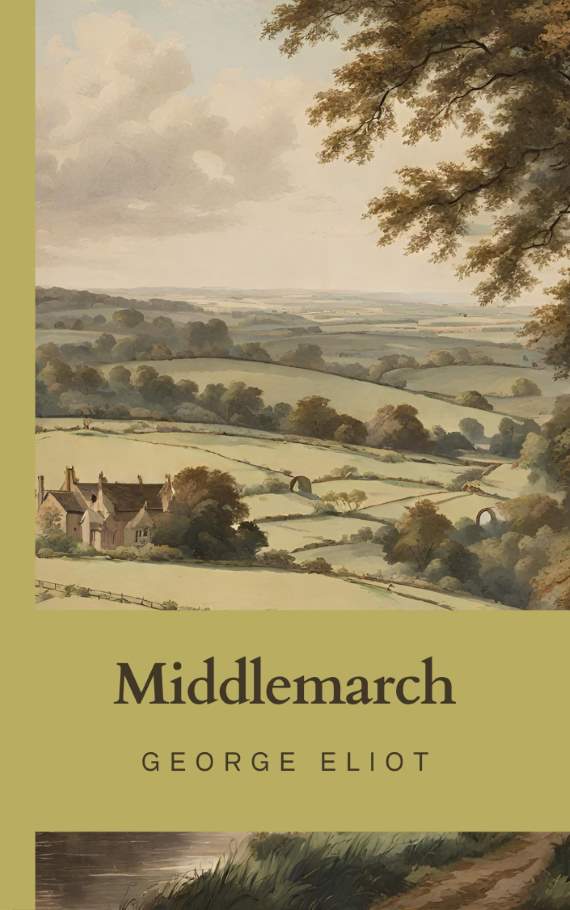
Can you imagine a time when reading a whole novel in one sitting just wasn’t the norm? Back in times past, readers would eagerly await each new installment of their favorite stories serialized and published in newspapers or magazines. That’s how serialization worked – authors released their books a bit at a time so readers were left wanting more.
This setup really helped to build anticipation. Getting a story in pieces over weeks or months created a unique experience. Readers had time to fully understand the arc of the story. Authors had to craft each chapter to leave readers on a cliffhanger so they’d come back for the next part. It was like a TV show before TV was invented. Great writers like Charles Dickens and Alexandre Dumas made their names this way, hooking people into following their adventures until the full book was complete.
It all started getting really popular in the 1800s when technology and logistics like printing presses were improving and more people had time for leisurely reading. Publishers realized they could make literature more affordable and profitable by releasing stories piece by piece since it made literature accessible to more people. Plus, the authors had to play the long game – keeping readers interested with little bites while also moving the overarching plot along.
Nowadays we’re so used to binging whole seasons of shows in one sitting that it’s hard to picture pacing ourselves week to week for the latest drama. The same goes for books – we download the full ebook instantly and books are published as self-contained works for the most part.
However, serialization isn’t totally gone from writing. Some authors still serialize online or release chapters individually since it keeps fans engaged long-term, especially for genres like fantasy novels with connected worlds and characters.
4 Books That Were Originally Serials
There are many examples of great novels that first appeared to audiences as serial installments. Below I have selected 4 that you can also download for free.
A Tale of Two Cities
A Tale of Two Cities is one of those classic novels that was originally published in installments. Between April and November of 1859, Charles Dickens unspooled the drama of the French Revolution in the pages of his magazine, “All the Year Round.” Releasing it week to week like that really kept readers hooked and eagerly awaiting each new chapter.
Dickens was a master storyteller and saw the business side of doing it this installment way. It helped build excitement around his book and kept people coming back for more. Reading it slowly over time also pulled readers deeper into the dark, twisty world he was creating. I’m sure some people found themselves literally counting down the days till the next issue came out!
Producing the book as a serial also let Dickens tailor the story based on feedback. If readers seemed to like a character, he could give them more page time. Or if a plot twist wasn’t landing right, he had room to adjust. It was super interactive for an author and audience back then. Must’ve made the reading experience way more immersive.
Of course, it wasn’t all sunshine. Having to churn out new content on a tight deadline schedule every week had to be stressful. Dickens probably had his fair share of all-nighters and incomplete plots. But his natural talent for telling stories carried him through any bumps in the road. Even with those challenges, he created something truly timeless.
Download A Tale of Two Cities By Charles Dickens For Free

A Tale of Two Cities is free to download in epub or PDF format from our library of ebooks. Click below to download the book to your device.
Anna Karenina
Leo Tolstoy’s literary masterpiece Anna Karenina was initially serialized in The Russian Herald magazine between 1873 and 1877, capturing the hearts and minds of eager readers. Published in installments over several years, the novel’s format allowed fans to join Anna, Count Vronsky, and the other complex characters on their journies, chapter by chapter.
Readers became deeply invested in following the lives and relationships unfolding over time. Each new installment was met with anticipation, as fans wondered how the intertwining storylines might progress. Through his skilful storytelling, Tolstoy succeeded in keeping audiences hooked, constantly leaving them on the edge of their seats until the next revelation.
This serialization presented a unique opportunity. It afforded Tolstoy the space to explore profound themes of love, society, and morality with depth and nuance through intricately woven plotlines. Fans happily awaited each new section, immersed in the suspense of the unresolved fates waiting to be discovered. The episodic release maintained reader engagement, as they grew increasingly invested in the characters they had come to know and care about.
In this way, Tolstoy’s masterful serial novel not only captivated contemporaries but has endured to this day as a timeless work of literary art. Its format reinforced the suspense and human nuance that elevates the reading experience for each new generation of devoted fans.
The Brothers Karamazov
Fyodor Dostoevsky is renowned today as one of literature’s greatest authors, but many readers may not know his final novel, The Brothers Karamazov, was released not as a complete work but through serial installments in a Russian periodical. This prolonged its publication over nearly a year.
Fans eagerly awaited these segments, as Dostoevsky was already renowned for deeply psychological works like Crime and Punishment that probed existence’s biggest questions. Releasing his new book piece by piece built massive anticipation, keeping readers on the edge of their seats between installments.
Dostoevsky carefully planned The Brothers Karamazov’s serialization, crafting an intricate mystery structure that resolved in waves through the story’s periodic divisions. Climactic revelations or dramatic cliffhangers concluded most portions, driving demand for the next. By spreading out a novel of such scope and complexity, Dostoevsky introduced his philosophical themes gradually and ensured audiences followed along at a digestible pace.
Fittingly for a tale examining faith, human nature and morality, Dostoevsky developed a community of readers experiencing his masterwork’s journey simultaneously through its installment format. Fans could ponder each section’s revelations together until receiving new material.
Download The Brothers Karamazov For Free

The Brothers Karamazov is free to download in epub or PDF format from our library of ebooks. Click below to download the book to your device.
Middlemarch
When George Eliot’s Middlemarch was first published between 1871 and 1872, it emerged not as a single complete work but through periodic parts in magaine form. What is now admired as a monumental literary achievement was experienced by early readers in a markedly different serial format.
The acclaimed novel was presented through eight installments spread across twenty-four monthly parts in Fredrick Greenwood’s prestigious magazine The Cornhill Magazine. Eliot had adopted a male pen name to avoid potential prejudices against female authors at the time. Serialization made her intricately woven storylines accessible to subscribers of The Cornhill, who could immerse themselves in segments periodically. Rather than completing the full novel in one sitting, Victorian audiences engaged with Eliot’s artistic realism through manageable monthly rolls released with each new periodical issue.
This incremental publication required skillful planning on Eliot’s part to sustain audience attention and deliver episodic narrative satisfaction. She artfully structured pieces with compelling cliffhangers meant to drive anticipation for subsequent parts.
Download Middlemarch For Free

Middlemarch by George Eliot is free to download in epub or PDF format from our library of ebooks. Click below to download the book to your device.
Will Serials Be Popular Again?
the era of serialization stands as a fascinating chapter in the history of literature, showcasing the evolution of reader engagement and storytelling dynamics. From the 19th-century serialized classics that captivated diverse audiences to the contemporary shift towards complete and instantly accessible works, the journey reflects not only changes in publishing practices but also shifts in reader preferences. While the serialized novel has largely given way to the immediacy of digital consumption, it continues to carve a niche in literature, with some authors choosing this format to engage and immerse readers in ongoing narratives. The legacy of serialized literature persists, reminding us of the unique charm and communal experience it once offered, shaping the way we perceive and consume stories across time.
